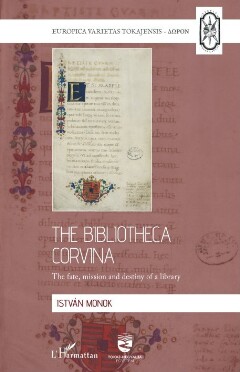Page 49 [49]
several articles, writing comprehensively about the codices found in Buda by
the Christian troops who drove out the Ottomans.””! During the past eighty years
all the experts who wrote about the Corvina’s two centuries following the death
of Matthias, including Csapodi as well, only used Klara Zolnai’s annotations as
sources. These annotations are good, but cannot replace the original sources. Es¬
pecially because the actual text, the individual references (diaries, forewords, let¬
ters, philological studies, historical summaries) completely reveal the origin of the
text, and more specifically how the destroyed library is mentioned. In order to
investigate the history of any corvina volume in more detail, we have to go back to
the accompanying texts of the 16th century editions and to the books published at
the time. An essential aim and task of Hungarian book historians could be - and
this cannot be repeated enough — the creation of an annotated anthology, in other
words a new Klara Zolnai volume, even keeping its structure.” A further pos¬
sible aspect of study is to summarise the conclusions of the discovered documents
by looking at how contemporaries viewed the already valuable collection, and its
destruction. Arpad Miko, in the catalogue of the exhibition on the bicentenary of
the national library, wrote an essay titled “Stories of the Corvina Library". He de¬
liberately did not deal with the 16th and 17th centuries. Presumably because basic
research is missing, or perhaps because the intentions of the figures in the Corvina
story are not as directly politically connected as in later periods.
As mentioned above, the panegyricus of Naldo Naldi (1436-1513) from the 15th
century survived,’’* which, although, is not an itemised list of the collection, but
is still a good starting point for analysing the library. The physical structure and
the interior of the bibliotheca can be imagined based on the description of Nico¬
laus Olahus (Miklös Oläh, 1493-1568).”° A surviving text from the struggles
surrounding Janos Corvin’s succession to the throne after the death of Matthias
demonstrates that the country’s leading politicians were aware of the role of the
library in the representation of power. This is why they demanded the return of the
books taken from Buda by Janos Corvin (1473-1504), which had been collected
t 226
‘pro decore Regni” by the royal cour
Kovats’s (KovAts Martiny1, Fragmenta, I-II., 1808-1809) were only occasionally referred to.
220 Csapop! 1961; Csapopt 1971.
21 Csapopt 1984.
22 SUPPLEMENTED, of course, by more recent approaches, mainly of an art historical or iconographic
nature, with a bibliographical account in a separate chapter. It is the year 2022, nothing has been done
since 2008. (see Monok 2008a).
223 We chose the title of this section as imitation. See M1x6 2002.
24 Naxopwus (ed. JÁNICHEN) 1731; Nanpius (ed. BÉL) 1737; Naroprus (ed. ÁBEL) 1890.
25 Irs analysis: BaALocn J. 1966, I, 62—65.; as a source: OLÁH, De Hungaria Occidentali (ed. BÉL), 1735,
8-9.
226 Mıxö 1999, Mixó 2004; M1x6 2004a; M16 2008; M1k6 2008a. This expression was also borrowed
for the exhibition presenting the pieces of the Buda workshop (ZsupAn-Förpesı, ed., Budai mühely,
2018).
47

